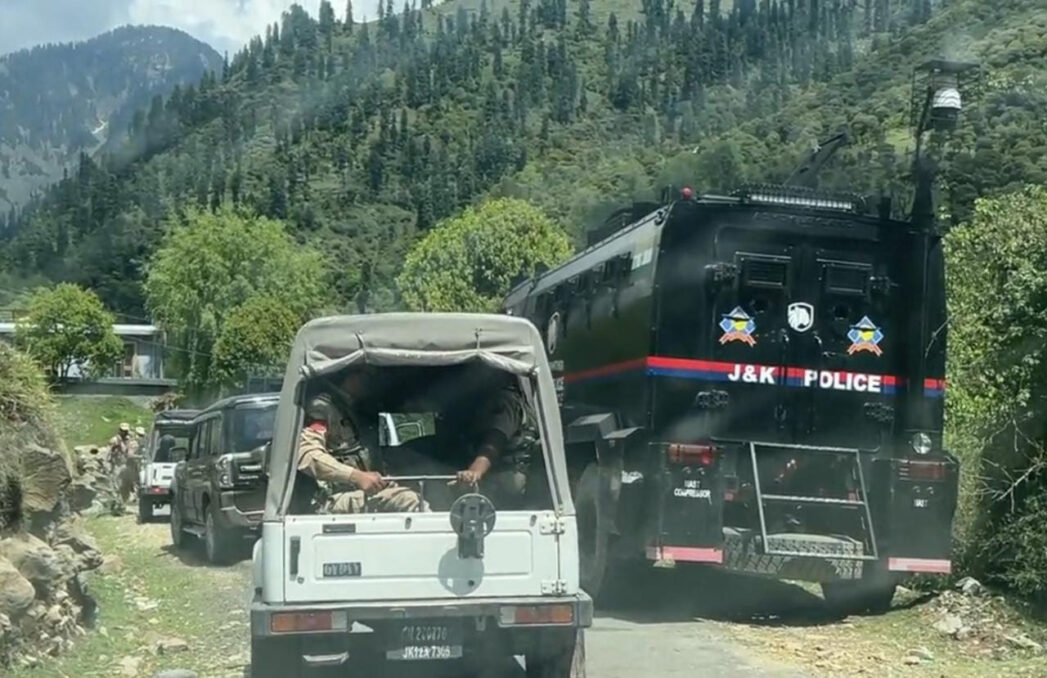The Army hasn’t promptly determined the identity or affiliation of the militant who was killed. During an anti-militancy operation on June 2 in Rajouri of the Pir Panjal Valley, an encounter took place where an unidentified militant, suspected to be a terrorist, was found dead.
This region had previously experienced two significant clashes earlier this year, resulting in the deaths of 10 soldiers. The Army is currently unable to provide immediate information about the slain militant’s identity or association.
According to an Army representative, a collaborative effort between the Army and the J&K Police was initiated in response to suspicious activity in the forest region of Dassal Gujran, near Rajouri.
The operation involved strategically positioning troops based on intelligence. When our troops confronted the individuals and issued a challenge, they responded with gunfire, prompting our troops to retaliate. There was intermittent firing that lasted throughout the night, as per the Army’s statement. An official stated that the Army has concluded the operation after discovering the body of a militant.
This year, there was an increase in militancy in the Rajouri-Poonch sector. Three different incidents linked to militancy resulted in the loss of ten soldiers, seven civilians, and one militant.
Security agencies are increasingly concerned about the use of advanced communication technology and highly covert sleeper cells, as they have led to a higher number of casualties in the Pir Panjal valley compared to the Kashmir valley this year.
Officials state that militants are altering their strategies in the Pir Panjal valley to outwit security agencies and prolong their presence in an area known for its challenging terrain comparable to the mountains of Afghanistan. The valley encompasses Rajouri and Poonch, two adjacent districts, and encompasses a stretch of 225 km along the Line of Control (LoC) with Pakistan-Occupied Kashmir (PoK).
Up until now, the Poonch-Rajouri sector has experienced a total of 18 fatalities this year, comprising 10 Army personnel, seven civilians, and one militant.
The number of casualties among both security forces and civilians is significantly higher compared to the militancy-affected Kashmir valley, where only one Army soldier and one civilian were killed due to militant activities during the same timeframe.
This suggests that militants have redirected their attention to a different area that was previously considered a zone with no military presence and experienced a decline in militant incidents from 2007 to 2019.
Revised operating
After the April 20 attack that resulted in the deaths of five soldiers travelling in trucks, authorities conducted interviews with more than 225 individuals residing in and near Batta Durian in Poonch’s Mendhar sector.
These interviews have revealed valuable information about the fresh tactics employed by militants who infiltrate the forests of the Pir Panjal valley.
According to the security official, once the infiltrators have entered the area undetected, they either make their way towards a known sympathizer like Ahmad, whose geographic location is provided to them through their phones, or they seek refuge in the houses located on higher ridges using force. Additionally, Ahmad is also alleged to have received a delivery by drone, containing weapons and money.
Intimidating the residents of a village
Security agencies have gathered the testimonies of multiple villagers, who revealed that the militants arrived and arranged the members of each family in a row. They utilized the family members’ smartphones to install and utilize an application for communication purposes across the Line of Control (LoC), promptly erasing it afterwards.
In several instances, they took pictures of themselves and sent them to their handlers located across the LoC, to intimidate the families.
The increase in militant activities in Rajouri-Poonch is not the sole reason for concern among security agencies. What is equally worrisome is the alteration in tactics, the utilization of more sophisticated sleeper cells, the adoption of highly secure communication methods, the incorporation of advanced technology, and the extensive training given to militants to effectively combat and endure in hostile forest environments.
Families separated and challenging landscapes
According to another official, the advantageous features for terrorists include the rolling terrain and numerous ridges. They can navigate from one ridge to another within dense jungles. Unlike Kashmir, these mountain ranges experience rapid snow melting.

This area was previously used as a transit route to reach south Kashmir, but recently militants have chosen to remain in this region. The topography here is as challenging as that in Afghanistan.
Many families, separated by the Line of Control (LoC) and with members living in Gulf countries, have created a communication network that raises concerns for security agencies.
The agencies are worried that sympathizers may use Gulf countries as an indirect channel to communicate with Pakistan, as it is a convenient and inconspicuous method.
Based on digital evidence, security agencies believe that six to eight well-trained militants involved in recent attacks and encounters are currently residing in the Pir Panjal Valley mountains, awaiting instructions from their handlers on the other side of the LoC.
Altering the movement of troops
Nonetheless, the People’s Anti-Fascist Front (PAFF) conveyed through an alleged online declaration that their actions in the Pir Panjal valley aimed to “reallocate resources from Ladakh to the Poonch-Rajouri sector.” The PAFF, a militant group, has claimed responsibility for two recent attacks in the area.
The statement additionally claims that we will force you to comply, thereby giving us a strategic edge. Eventually, our associates will force you to relocate your resources back to Ladakh. Your notion of a two-front conflict has now become a self-fulfilling prophecy.” The security agencies have not provided any comment regarding the authenticity of the PAFF’s statement.













